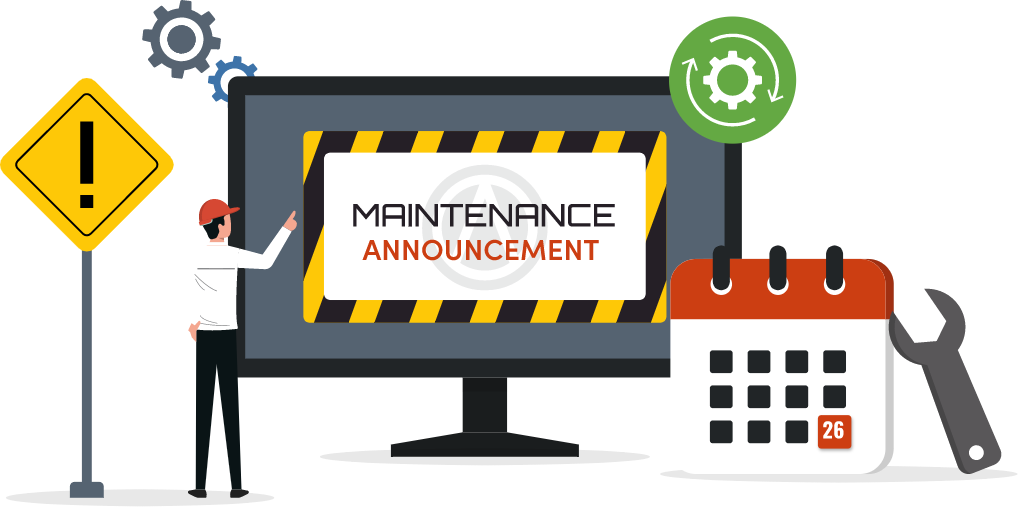What are the three main financial statements every restaurant should review?
The three key financial statements are the Income Statement (Profit & Loss), Balance Sheet, and Cash Flow Statement. Together, they show your restaurant's performance, financial position, and cash health - giving you a complete picture of how your business is doing.
Restaurant Financial Statements Explained
Overview
Running a restaurant takes more than good food and friendly service - it takes a clear understanding of where your money is coming from and where it's going. Many owners focus on daily operations but avoid digging into their financial statements because the numbers seem confusing or time-consuming. The truth is, these reports are your restaurant's road-map. They show whether you're making money, where costs are rising, and how healthy your business really is.
Financial statements aren't just for accountants. They help you spot problems early, plan for slow seasons, and make smarter decisions about pricing, staffing, or equipment purchases. According to the National Restaurant Association, over 60% of restaurants that close within five years cite poor financial management as a key reason. That means staying on top of your numbers isn't optional - it's survival.
In this guide, we'll explain the three main financial statements - the Income Statement, Balance Sheet, and Cash Flow Statement. You'll learn what each one means, why it matters, and how to use them to understand your restaurant's true performance and build a stronger, more profitable business.
The Three Core Financial Statements at a Glance

Every restaurant owner should know the three key financial reports that keep a business on track - the Income Statement, the Balance Sheet, and the Cash Flow Statement. Think of them as your restaurant's health check - each one tells a different part of the story. When reviewed together, they give you a complete picture of how well your restaurant is performing and where it might be struggling.
The Income Statement, also known as the Profit and Loss Statement (P&L), shows how much money your restaurant made and spent over a specific period - usually a week, month, or quarter. It helps you see whether you're making a profit or running at a loss. It's where you'll find total sales, food costs, labor costs, and overhead expenses like rent and utilities.
The Balance Sheet gives you a snapshot of what your restaurant owns (assets), what it owes (liabilities), and the value left over (owner's equity). It's like a photo of your financial position at a single moment in time, helping you understand your long-term stability.
Finally, the Cash Flow Statement tracks the actual movement of money - what's coming in and what's going out. Even a profitable restaurant can run into trouble if cash flow isn't managed properly.
When you combine these three statements, you can see not just your profits, but also your financial strength and your ability to keep the business running smoothly day to day. Together, they turn raw numbers into clear insights that help you make better decisions.
The Smarter Choice for Maximizing Your Financial Potential
Streamline Your Restaurant's Finances with Altametrics!
Understanding the Income Statement (Profit & Loss)
The Income Statement, or Profit and Loss (P&L), is one of the most useful financial tools for restaurant owners. It tells you how much money your restaurant earned, what it spent, and how much profit (or loss) you made during a specific time period. To make it simple, here's what to focus on -
1. Revenue (Sales)
This is all the income your restaurant generates - from dine-in, takeout, delivery, catering, and drinks. Tracking total sales helps you understand which areas are growing or slowing down.
2. Cost of Goods Sold (COGS)
These are the direct costs of producing your menu items - ingredients, packaging, condiments, and paper goods. When you subtract COGS from sales, you get your gross profit, showing how much you earned before expenses like labor and rent.
3. Operating Expenses
This includes labor costs, rent, utilities, insurance, marketing, cleaning supplies, and repairs. Monitoring these costs regularly keeps you from overspending in non-food areas.
4. Net Profit (or Loss)
After subtracting all costs from your revenue, you're left with your bottom line. This tells you if your restaurant is truly making money.
5. Prime Cost Benchmark
Your prime cost - the total of labor and COGS - should stay under 65% of total sales. If it's higher, you may need to adjust pricing, portion sizes, or scheduling.
Reviewing your P&L each month gives you the power to catch issues early, make adjustments, and keep your restaurant profitable and sustainable.
Breaking Down the Balance Sheet
The Balance Sheet gives you a snapshot of your restaurant's financial position at a single point in time. While the income statement shows performance over a period, the balance sheet tells you what you own, what you owe, and what's left over. It's like a photo of your restaurant's financial health at the end of the month or quarter. Understanding it helps you manage debt, plan for growth, and ensure stability.
The balance sheet is divided into three main sections -
1. Assets
These are the things your restaurant owns that have value. They include cash in the bank, inventory, kitchen equipment, furniture, prepaid rent, and accounts receivable (money owed to you). Strong assets show that your business has resources to cover costs and reinvest in operations.
2. Liabilities
These are what your restaurant owes to others - supplier bills, credit card balances, equipment loans, and unpaid taxes. Keeping track of liabilities helps prevent falling behind on payments or taking on too much debt.
3. Owner's Equity
This represents your ownership value in the business. It's what's left after subtracting liabilities from assets. Over time, growing equity signals that your restaurant is building long-term value and financial strength.
A good rule of thumb is to keep your debt-to-equity ratio low. If liabilities grow faster than assets, it could mean your restaurant is over-leveraged and vulnerable to downturns. Reviewing your balance sheet regularly helps you see whether you're strengthening or stretching your finances - giving you a clear picture of stability beyond daily sales.
The Cash Flow Statement

The Cash Flow Statement shows how money actually moves in and out of your restaurant - and that's what keeps your doors open. While the income statement might show a profit, your business can still run out of cash if bills, payroll, or supplier costs aren't timed correctly. In short, the cash flow statement reveals whether your restaurant has enough liquid funds to cover day-to-day operations.
This report is usually divided into three key parts -
1. Operating Activities
This section tracks cash from your restaurant's core operations - sales, supplier payments, wages, and utilities. It reflects how efficiently your daily business generates and uses cash. A positive operating cash flow means you're earning more from operations than you're spending.
2. Investing Activities
This includes money spent on or earned from long-term assets like new kitchen equipment, furniture, or renovations. While these investments can temporarily reduce cash, they often help your restaurant grow or become more efficient over time.
3. Financing Activities
Here you'll find any inflows or outflows from loans, repayments, or owner investments. Tracking this helps you understand how much your restaurant depends on borrowed funds versus operating income.
A healthy restaurant maintains positive cash flow, meaning it consistently brings in more money than it pays out. Many operators review their cash flow weekly to avoid surprises - such as being short for payroll or supplier payments. By monitoring these three sections, you'll always know where your money stands, make better spending decisions, and avoid the stress of last-minute financial crunches.
Experience The Benefits of Efficient Financial Management
Take Control of Your Store's Finances with Altametrics
Connecting the Dots
While each financial statement tells its own story, the real power comes from seeing how the Income Statement, Balance Sheet, and Cash Flow Statement work together. When viewed as a group, they show the full picture of your restaurant's financial health - from daily operations to long-term stability.
Here's how they connect -
1. The Income Statement feeds into the Balance Sheet
At the end of each period, your net profit (or loss) from the income statement affects the equity section of your balance sheet. If your restaurant earns a profit, your retained earnings grow. If it loses money, your equity decreases. This link shows how your daily operations impact your overall financial position.
2. The Balance Sheet explains your Cash Flow Statement
Changes in assets and liabilities on your balance sheet help explain why cash moved up or down during the period. For example, buying new equipment reduces cash, while taking a loan increases it. This connection reveals the real-life impact of financial decisions.
3. The Cash Flow Statement ties everything together
Even if your income statement shows a profit, your cash flow statement tells you whether that profit actually translates into spendable money. It ensures you're not profitable on paper but cash-poor in reality.
By reviewing all three reports together, restaurant owners can make more accurate decisions - whether it's budgeting for a remodel, adjusting menu pricing, or planning staff schedules. Understanding these links helps you move from guessing to managing with confidence, ensuring your restaurant runs not just efficiently, but sustainably.
Common Financial Mistakes Restaurant Owners Should Avoid
Even the most passionate restaurant owners can struggle with financial management. It's easy to get caught up in daily operations and overlook the numbers that matter most. Unfortunately, small accounting errors or bad habits can quickly lead to cash shortages, unpaid bills, or inaccurate reporting. Understanding the most common financial mistakes can help you prevent them before they hurt your business.
1. Mixing personal and business finances
Many owners use one bank account for both personal and restaurant expenses. This makes it difficult to track true profitability or prepare accurate tax records. Always keep your business finances completely separate from personal spending.
2. Ignoring regular financial reviews
Waiting until tax season to review your numbers is a costly mistake. Successful operators review financial statements monthly - sometimes weekly - to catch trends early, manage costs, and stay ahead of potential issues.
3. Not reconciling POS data with financial reports
If your sales data from the POS doesn't match your accounting records, you could be missing revenue or double-counting transactions. Regular reconciliation ensures accurate reporting and helps detect theft or system errors.
4. Overlooking accruals and unpaid expenses
Ignoring bills that haven't been paid yet can make your finances look better than they really are. Always account for outstanding invoices, vendor payments, and future liabilities.
5. Failing to monitor key ratios
Neglecting essential metrics like prime cost, food cost percentage, or debt-to-equity ratio can hide deeper financial issues. Tracking these helps you understand efficiency, profitability, and risk.
Avoiding these common mistakes doesn't require an accounting degree - just consistent attention and clear systems. A few hours each month reviewing your reports can save you thousands and keep your restaurant financially healthy.
Final Thoughts
Understanding your restaurant's financial statements isn't about crunching numbers - it's about taking control. Once you know how to read your income statement, balance sheet, and cash flow report, you can make decisions based on facts, not guesswork. You'll see which areas are performing well, where you're overspending, and how much cash you really have to grow your business.
The key is consistency. Reviewing your financials each month helps you spot trends before they become problems. Maybe your food costs are creeping up, or labor hours are higher than sales can support - the sooner you see it, the sooner you can act. By treating your financial statements like a health check-up, you'll protect your profits and strengthen your long-term stability.
Modern technology makes this easier than ever. Instead of juggling spreadsheets and manual reports, today's restaurant owners can rely on integrated tools that track sales, inventory, and labor automatically - all in real time.
Take Control of Your Restaurant's Finances with Altametrics
Managing your financial data doesn't have to be complicated. With Altametrics you can connect your sales, labor, and inventory systems into one easy-to-use platform. Instantly access up-to-date reports, monitor cash flow, and identify profit opportunities with just a few clicks.
Altametrics helps you simplify financial management, reduce costly errors, and make smarter business decisions every day - so you can focus on what matters most- running a successful restaurant.
Start your journey toward a more efficient, connected, and profitable restaurant by clicking "Schedule a Demo" below.



































































































































































































































































